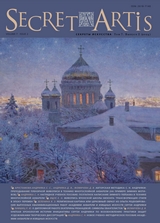
“Secreta Artis” (“Art Secrets”), the academic and methodological journal devoted to issues of art and art teaching methodology, aims to revive the best traditions of fine art, re-create and build on the classical system of fine arts education. The academic journal focuses on investigation in the field of theory, techniques and technologies of the visual arts as well as publications devoted to methods and systems of art education. In the past, when the fine arts flourished, practical experience was passed on by word of mouth from masters to students. Today we lack such expertise, since bearers of professional secrets are no longer with us. This explains why “Secreta Artis” authors conduct research to contribute to the body of such knowledge, analyzing archival documents, material from the restoration and science labs, testing theory through its application, etc. “Secreta Artis” acquaints readers with a variety of fine art techniques: oil, watercolor, tempera, pastel, fresco painting, drawing, etching, sculpture, mosaic, stained glass, jewelry.
“Secreta Artis” is interested in collaboration with Russian and foreign artists engaged in similar research, development of educational programs and teaching methods. We invite cooperation with restorers and experts in the field of the examination of works of art.


















